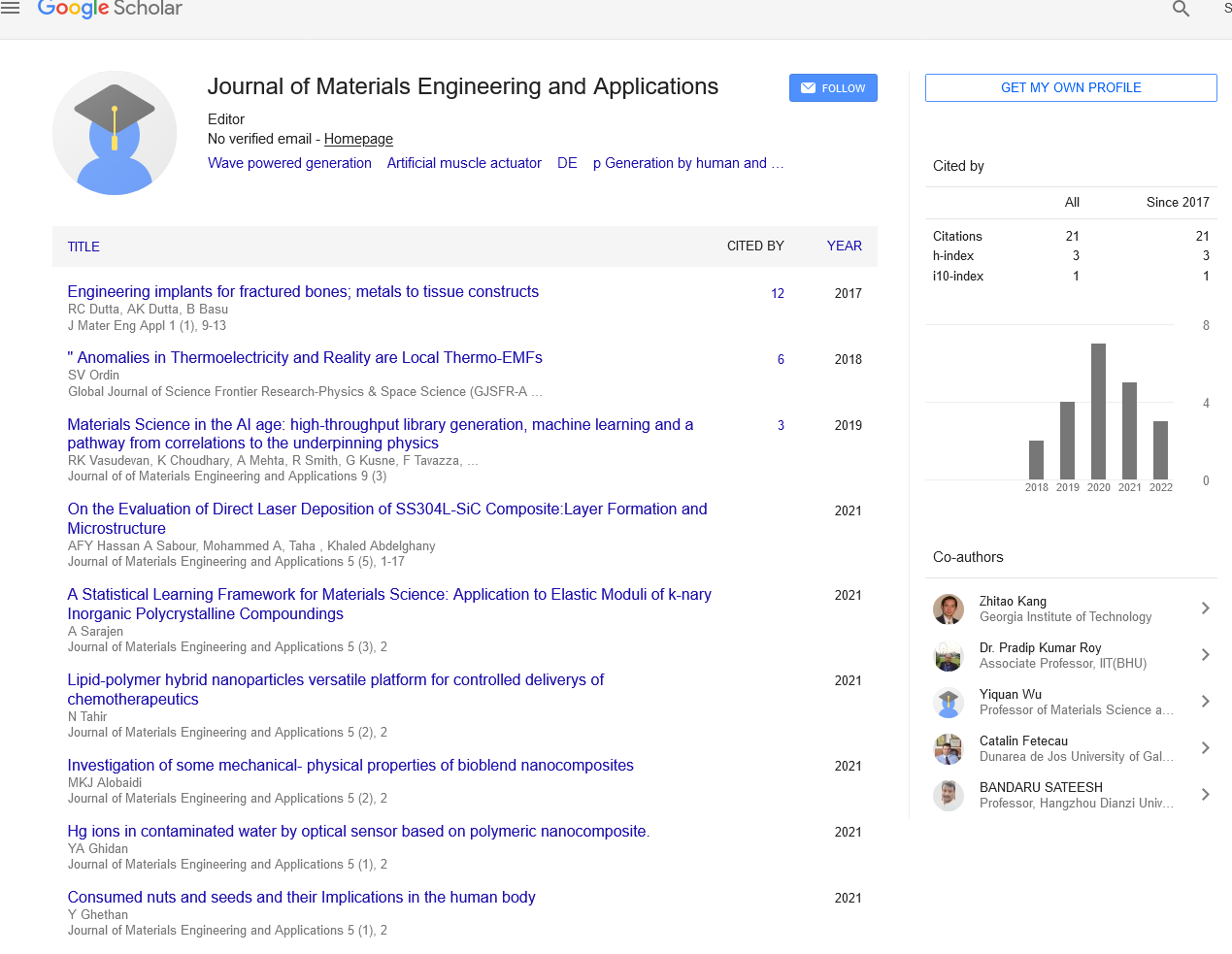Manufacture the Low-Cost Complex Pieces in the Aerospace
Received: 01-Dec-2021 Accepted Date: Dec 16, 2021; Published: 23-Dec-2021
This open-access article is distributed under the terms of the Creative Commons Attribution Non-Commercial License (CC BY-NC) (http://creativecommons.org/licenses/by-nc/4.0/), which permits reuse, distribution and reproduction of the article, provided that the original work is properly cited and the reuse is restricted to noncommercial purposes. For commercial reuse, contact reprints@pulsus.com
Editorial Note
The need to manufacture the low-cost complex pieces in the aerospace, military and oil and gas industries has led researchers to develop new methods in manufacturing. The most commonly used industrial components are conical-cylindrical components with fixed or variable thickness profiles of titanium, Inconel and super alloys and stainless steels with dimensional and geometric tolerances. One of the most practical methods for manufacturing shell pieces is the use of a spinning, which is a flexible method with specific functional accuracy. The most important feature of the spinning technique that makes this method efficient is the production of symmetric metal thin slice pieces, is that the force is applied locally and at a low intensity. In addition, the accuracy and quality of the surface after forming are acceptable in this method. For this reason, the spinning method is one of the suitable methods for forming a low thickness sheet to produce hollow axial symmetric thin wall parts. Also, the use of the spinning process in the manufacture of various types of super alloys, due to their high strength to weight ratio, the type of forming process and numerous effective parameters, and the widespread use in the military industry, as well as the scarcity of the number made of this type have been emphasized in various studies investigated the mechanical properties of Inconel 708 alloy after spinning and heating.
The results of heating had a direct effect on yield stress and elongation percentage. In another study, investigated the hardness and microstructure of components made of 718 alloy. Based on their studies, it was found that heating after forming reduced the hardness of the part by nearly 100%. This is because the low heating temperature causes the transition to the delta phase in the work piece, which increases the work piece stiffness. Hihu experimentally formed Haynes 282, alloy 718, alloy 600, SS 316L sheets by a spinning. In this paper, the effect of feed rate was investigated. In addition, we used heating to reduce the hardness of the Haynes and 718 alloys. The results showed that this reduction resulted in the reduction of hardness and improvement of microstructure and hardness of the work piece and reduction of residual stresses. This investigates the spinning of the Hatselloy X alloy to produce a bowl-shaped piece under high thermal stresses.
Important parts of spinning process
The mandrel is one of the most important parts of the spinning process. In this study, two mandrels were fabricated by CNC turning machine by alloy steel. Mandrels have been attempted to be made very carefully from 3D drawings of work piece. One of the mandrels was used to form the inner part of the work piece and the other was used to form the outer part. Experimental experiments were performed by spinning machine with a diameter of 120 mm and a radius of 5 mm. Because the material of the AMS 5536 has work hardening property, after a certain time of the forming process, the alloying ability of this alloy is reduced, so the furnace should be used to improve the microstructure. The microstructure of the specimens after the first stage of formation is composed of austenitic background and carbides phase. Slip lines are high density. At this stage, we performed the tensile and hardness test of the specimens. The stress-strain diagram of samples obtained from the work piece with a certain percentage of cold work, tested at ambient temperature. This value differs sharply from the results obtained in the usual case (45%) (K Zaba1 2014 and AMS5536, 1960), which can be attributed to the cold-work performed on this sheet. The results of this tensile test are consistent with the practical results that lead to sheet tearing, since the continuation of the forming process results in the shear and tearing of the sheet.





